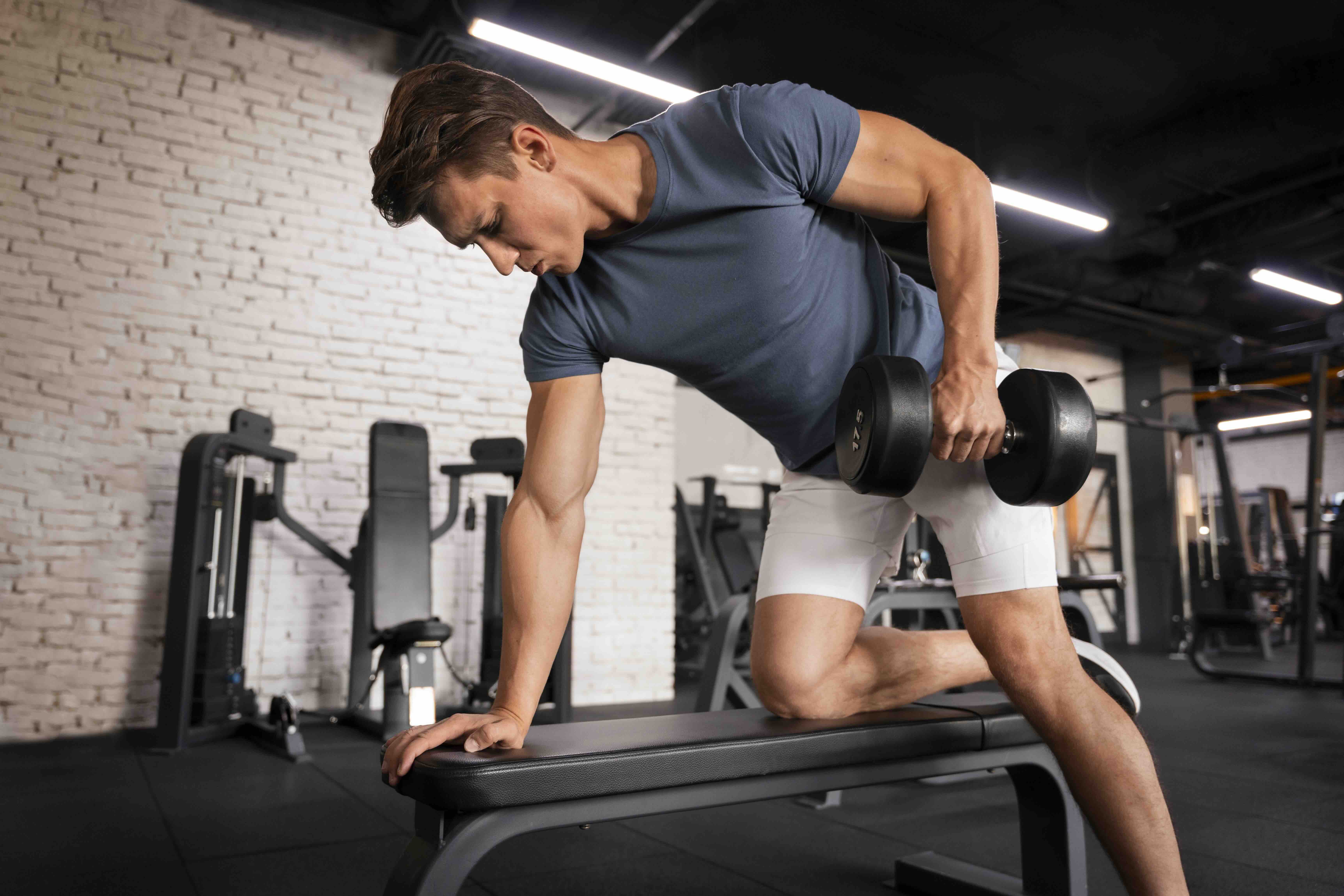The dumbbell row is a powerful, versatile exercise that targets the upper back, shoulders, and arms, making it a staple in strength training and bodybuilding routines. Whether you're a seasoned athlete or a fitness newbie, incorporating dumbbell rows into your workout can enhance your upper body development and contribute to overall muscle symmetry. In this post, we’ll break down the benefits of dumbbell rows, how to perform them correctly, and variations to keep your workouts exciting and effective.
Benefits of Dumbbell Rows
Including dumbbell rows in your workout regimen offers several advantages:
- Improved Upper Body Strength: Dumbbell rows primarily target the latissimus dorsi muscles (lats), but they also engage the trapezius, rhomboids, posterior deltoids, and biceps, contributing to a well-rounded upper body strength.
- Enhanced Muscle Balance: Since dumbbell rows are performed one arm at a time, they help correct muscle imbalances that might develop from using barbells or machines.
- Core Stability: As you perform the row, your core muscles are engaged to stabilize your body, thereby strengthening your abs and obliques.
- Improved Posture: By strengthening the upper back and shoulder muscles, dumbbell rows can help counteract the effects of poor posture, especially for those who spend a lot of time sitting or working at a desk.
How to Perform a Dumbbell Row
Follow these step-by-step instructions to perform a dumbbell row with proper form:
- Position Yourself: Stand beside a bench and place your right knee and hand on its surface. Your left foot should remain firmly on the ground.
- Grip the Dumbbell: With your left hand, grab a dumbbell with your palm facing inwards.
- Maintain Proper Form: Keep your back straight and slightly above parallel to the floor, your head aligned with your spine, and your core engaged.
- Row the Dumbbell: Pull the dumbbell towards your waist, keeping your elbow close to your body. Focus on squeezing your shoulder blade as you lift.
- Control the Descent: Slowly lower the dumbbell back to the starting position.
- Repeat: Perform the desired number of repetitions, then switch to the opposite side.
Common Mistakes to Avoid
When performing dumbbell rows, be mindful of these common mistakes:
- Rounding Your Back: Keep your back straight to prevent injury and maximize effectiveness.
- Using Momentum: Avoid swinging the dumbbell; control the movement to engage the target muscles fully.
- Incorrect Elbow Position: Your elbow should move along your body, not flare out, to target the correct muscles.
- Neglecting the Core: Engage your core throughout the exercise to maintain stability and prevent lower back strain.
Variations to Try
To add variety and challenge to your workouts, try these dumbbell row variations:
- Two-Arm Dumbbell Row: Perform rows with both arms simultaneously while bent over. This version increases the intensity and requires more core stability.
- Chest-Supported Dumbbell Row: Lie face down on an incline bench, allowing for a different angle of row with minimal lower back involvement.
- Renegade Row: Get into a high plank position with a dumbbell in each hand; row one dumbbell at a time, demanding greater core activation and stability.
Incorporating dumbbell rows into your workout routine is a fantastic way to build a strong, balanced upper body. By focusing on form and gradually increasing your weights, you'll be reaping the benefits in no time. Remember, consistency is key, so keep rowing and stay strong!

